Graceful curves, white concrete and utopian visions are signatures of Oscar Niemeyer, one of the most impactful masters of modern architecture. The design of Brasilia is part of his inspiring legacy, and a landmark for later movements.
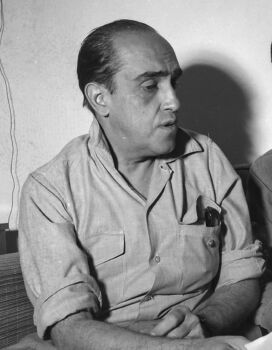
Image source:https://en.wikipedia.org/wiki/Oscar_Niemeyer#/media/File:Oscar_Ribeiro_de_Almeida_Niemeyer_Soares_Filho..tif
“I am not attracted to straight angles or to the straight line, hard and inflexible, created by man. I am attracted to free-flowing, sensual curves. The curves that I find in the mountains of my country, in the sinuousness of its rivers, in the waves of the ocean, and on the body of the beloved woman. Curves make up the entire Universe, the curved Universe of Einstein.”
Oscar Niemeyer
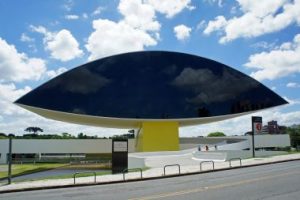
Image source:https://commons.wikimedia.org/wiki/File:CWB_Olho_Niemeyer_11_2013_7268.JPG
A New Architectural Language
出生在Rio de Janeiro, Oscar Niemeyer studied at theAcademy of Fine Arts. Very soon, the decorated architect won the1988Pritzker Prize,1998 RIBA Gold Medal, andother awards. His career began in the1930s, when he collaborated with his mentorLúcio Costa, a pioneer of modern architecture, to design theBrazilian Pavilionfor theNew York World’s Fair. Later, he became part of a group of young architects, who collaborated withLe Corbusier, to design theMinistry of Education and Health. Meanwhile, Niemeyer metJuscelino Kubitschek, future President of Brazil. When Brasilia became the new capital of Brazil, Kubitschek appointed Niemeyer to be thechief architect这个城市。城市本身就是一个有远见的象征of modernism and Brazilian dreams of progress.
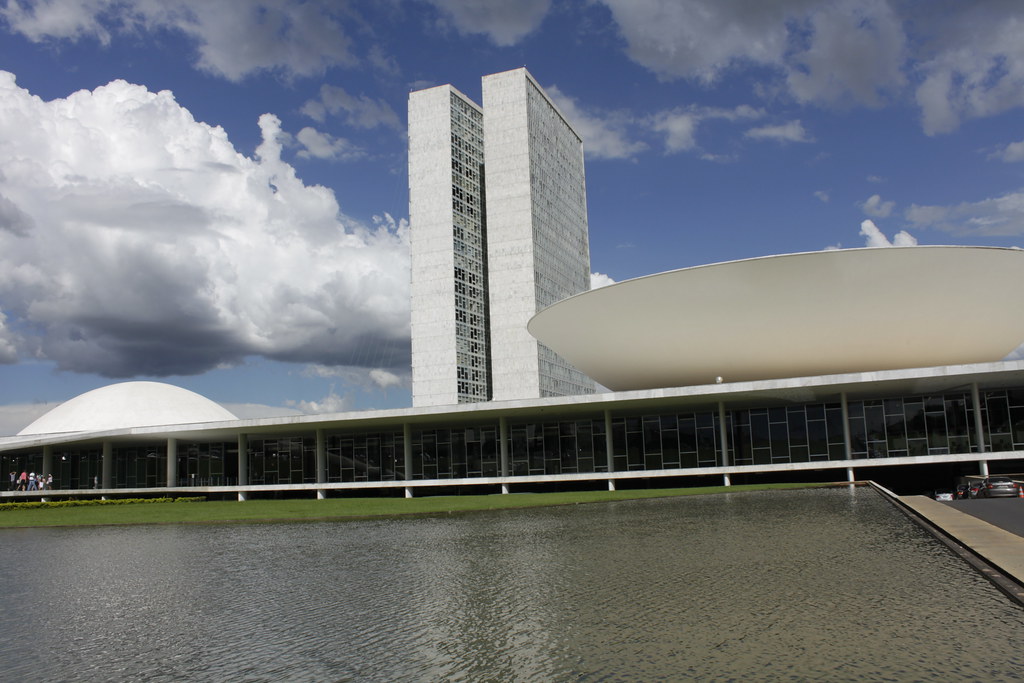
Image source:https://search.creativecommons.org/photos/ce593757-bc98-4069-abd7-d5e28c6a2961byakasped
He worked again withLe Corbusieron the design for theUnited Nations Headquarters. During military dictatorship, he was forced to exile for his left-winged political ideology and moved toFrance. Niemeyer career includes internationally renowned buildings, such as the “Instituto Tecnológico de Aeronáutica” inSao Paulo,Communist Party HeadquartersinParis, and inItaly,Mondadori Editorial Officeand theFATA Office BuildinginItaly(respectivelyMilanand都灵), theUniversity of Constantine,La Coupole d’Alger ArenaandHouari Boumediene Universityof Science and Technology, TheOscar Niemeyer Museum in Curitiba, also known asNiemeyer’s Eye. He died in2012, 10 days short of his 105th birthday. The architect was still giving directions on the ongoing project from his hospital bed.
Ordem e Progresso
The neo-electedJuscelino Kubitschekwas fascinated by progress. The climax of his “fifty years of progress in five” campaign was the colonization of the hinterland and the building ofBrasilia,capital. Supported by the “Plano Piloto” of Costa, the city was designed in the shape of a symbol of progress: the plane. Niemeyer was nominated chief architect of the city. The result was a new model of city and society, an image of the future. White concrete, open plans, sensual curves, reflecting pools with grass all around characterize Niemeyer’s architecture. The carnevalization is a recurring element, at the same time paying tribute to the historical model and marking the distance from it. Column-like exteriors and other classical elements were hybridized with Corbusian iconography of pilotis, brise-soleils, and glass, creating a new language. However, NiemeyerrejectedLe Corbusier’s rigidity: he was inspired by Brazilian landscapes and women’s sinuous curves. The city received a Historical and Cultural Heritage of Humanity status, becoming the only 20th-century city in the world recognized by UNESCO.
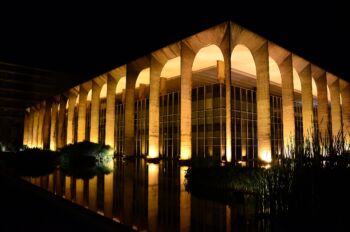
Image source:https://en.wikipedia.org/wiki/Oscar_Niemeyer#/media/File:Foto_noturna_do_Itamaraty.jpg
The Niterói Contemporary Art Museum
TheNiterói Contemporary Art Museumis located inRio de Janeiro’sGuanabara Bay. The structure vaguely resembles a flying saucer: it features an inverted cone shape in white concrete and stands in the middle of a circular pool. Thecircular motifis recurrent in the museum: it characterizes the ramp, the pool, the lamps, the internal balconies and the structure itself. A spiral stair connects the four levels of the museum. The perimeter of the middle-levels features two panoramic promenades bordered by ribbon windows, providing a view over the Guarana Bay. A long curvilinear ramp reaches the entrance of the first floor and the visitors’ exit on the second floor; thus creating a continuous, uninterrupted path throughout public realm and museum which, inevitably, evokes theGuggenheimbyFrank Lloyd Wright. Niemeyer aimed to create a building totally integrated with the landscape, looking like a natural element in the bay.

Niterói Contemporary Art Museum, with the typical inverted cone shape.
Image source:https://search.creativecommons.org/photos/c8a7ffe0-02d2-4377-a801-41497d978bbcbyJules Antonio
The Cathedral of Brasilia
This building led Niemeyer to his acceptance of thePritzker Prizein1988. It combines modern elements, such as curved lines andBrazilian Baroquereminiscences: the sculptures allude to Aleijadinho’s heritage. The structure of theCathedral of Brasiliawas based on revolved hyperbolas, where the sections are asymmetric. The structure itself is the result of sixteen curved columns. Reaching up towards the sky to represent two hands, the columns have parabolic sections and are connected by a glass ceiling, which begins at the floor. The circular base of the structure is surrounded by a reflecting pool under which worshipers pass to enter the building. This dark space separates from external world and prepares to reach a holy, infinite space. Four bronze sculptures made byDante Crocestand outside the entrance, and represent the Evangelists. More sculptures can be seen inside the long nave, where three angels are suspended by steel cables. The Cathedral is completed with its bell tower. Despite Niemeyer was a fervent supporter ofCommunist Party, this compact and clean concept was conceived to express general deep andreligious sentiment.
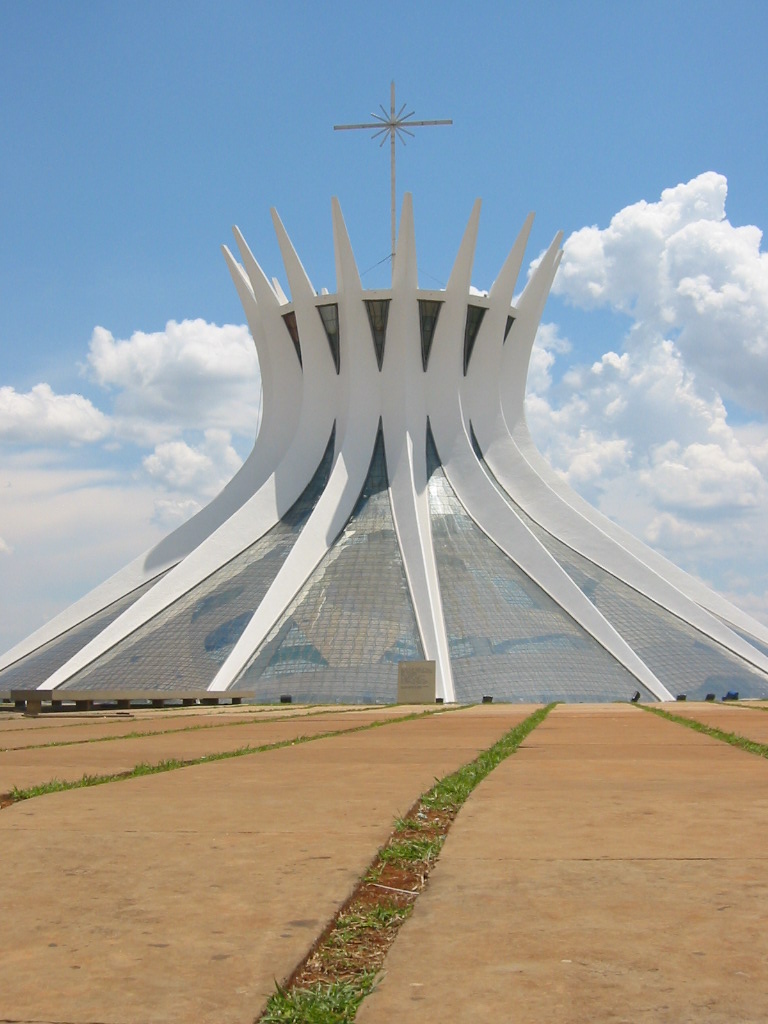
Image source:https://en.wikipedia.org/wiki/Oscar_Niemeyer#/media/File:Cathedral_Brasilia_Niemeyer.JPG
Info source:
https://theculturetrip.com/south-america/brazil/articles/oscar-niemeyer-form-follows-feminine/
https://www.curbed.com/2019/6/7/18657121/brasilia-brazil-urban-planning-architecture-design
https://www.pritzkerprize.com/biography-oscar-niemeyer
https://www.architecturaldigest.com/gallery/stunning-modern-architecture-oscar-niemeyer
https://en.wikiarquitectura.com/building/brasilia-cathedral/
https://www.concreteandkitsch.com/2019/05/26/niemeyer-algeria-modernism/
https://www.inexhibit.com/mymuseum/niteroi-contemporary-art-museum-rio-de-janeiro-oscar-niemeyer/
